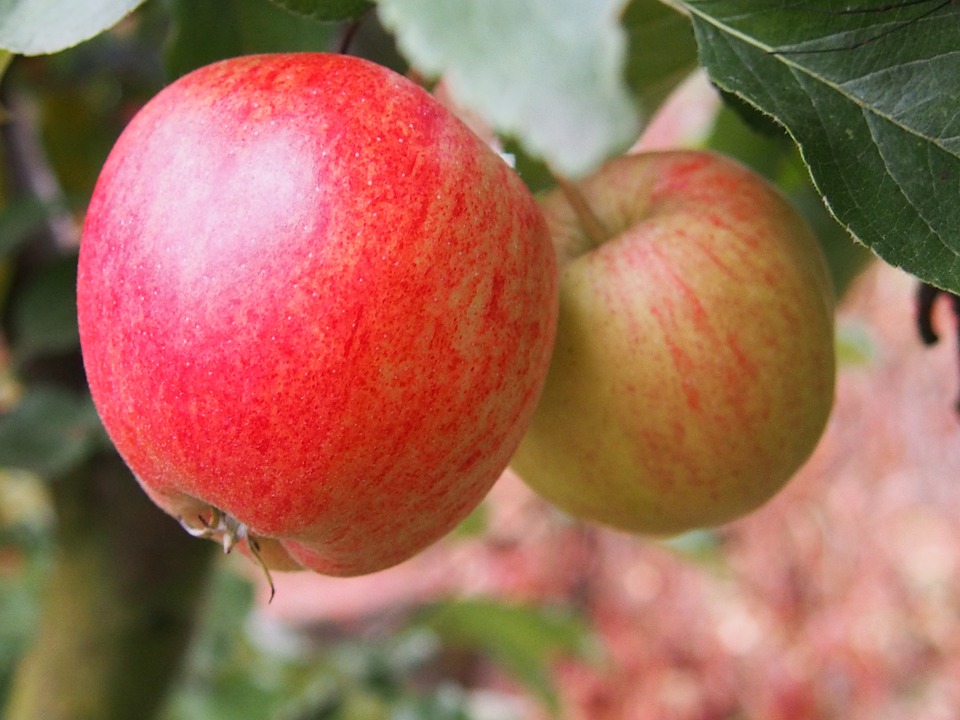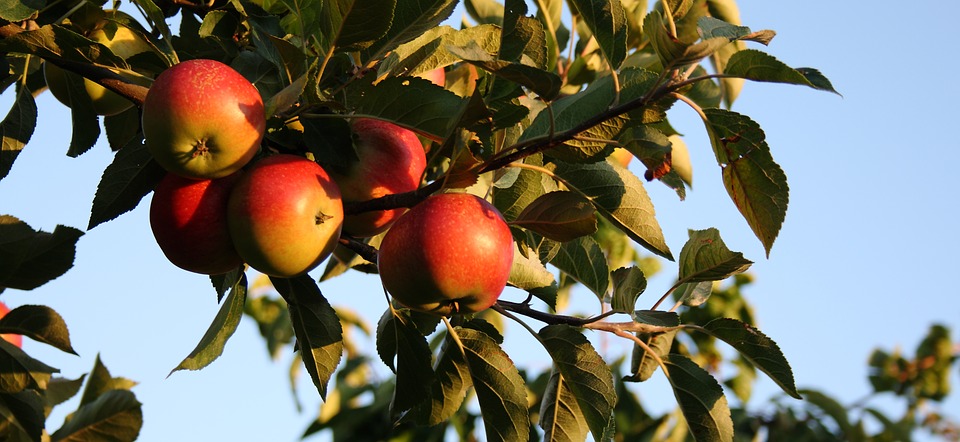This article delves into the question of whether dogs can eat apples and provides a comprehensive guide on how to safely introduce apples into your canine companion's diet. We'll explore the nutritional benefits of apples for dogs, the potential risks and dangers associated with apple consumption, and provide practical tips for incorporating apples into your dog's meals.
Part 1: Apples and Dogs: A Nutritional Perspective

1.1 Nutritional Value of Apples
Apples are a rich source of various nutrients that can benefit both humans and dogs. These include:
- Fibre: Apples are packed with dietary fibre, which plays a vital role in maintaining a healthy digestive system. It helps regulate bowel movements, preventing constipation and promoting regularity. Fibre also helps slow down the absorption of sugars, contributing to a steady blood sugar level.
- Vitamin C: While not as rich in Vitamin C as some other fruits, apples still offer a decent amount. Vitamin C is an essential antioxidant that supports a strong immune system, helps maintain healthy skin, and aids in wound healing.
- Antioxidants: Apples are rich in antioxidants, including quercetin and catechin, which help protect cells from damage caused by free radicals. These free radicals contribute to aging and diseases like cancer.
- Potassium: Potassium is an essential mineral that plays a crucial role in maintaining fluid balance, muscle function, and nerve health. It also helps regulate blood pressure.
- Vitamin K: Apples contain Vitamin K, which is important for blood clotting and bone health.
1.2 Benefits of Apples for Dogs
The nutritional content of apples translates into various benefits for your canine companion:
- Improved Digestion: The high fibre content in apples promotes healthy digestion, reducing the risk of constipation and diarrhoea. This is especially beneficial for dogs prone to digestive issues.
- Enhanced Immune System: Vitamin C contributes to a robust immune system, helping your dog fight off infections and stay healthy.
- Healthy Weight Management: Apples are low in calories and high in fibre, making them a suitable treat for dogs who need to maintain a healthy weight. The fibre content also helps them feel fuller for longer, reducing the urge to overeat.
- Fresh Breath: The crunchy texture of apples can help scrape away plaque and bacteria from teeth, promoting fresher breath and better oral hygiene.
- Improved Energy Levels: The natural sugars and carbohydrates in apples can provide a boost of energy for your dog, especially during playtime or exercise.
Part 2: The Risks of Feeding Apples to Dogs

2.1 The Dangers of Apple Seeds
The biggest concern when feeding apples to dogs is the presence of cyanide in the seeds. Cyanide is a toxic substance that can cause serious health problems, including:
- Vomiting
- Diarrhoea
- Difficulty breathing
- Seizures
- Coma
- Death
The amount of cyanide present in a single apple seed is generally not enough to cause serious harm to a healthy adult dog. However, the risk increases with the number of seeds consumed. Therefore, it's crucial to always remove the seeds and core before giving any apple to your dog.
2.2 The Role of the Apple Core
While the seeds are the primary concern, the apple core itself should also be removed. This is because it can be a choking hazard, especially for smaller dogs. The core can also be difficult to digest and may cause gastrointestinal upset.
2.3 Other Risks
While apple seeds pose the most significant risk, other factors can also cause problems:
- Choking Hazard: Large chunks of apple can pose a choking hazard, especially for smaller dogs or puppies. Always cut apples into bite-sized pieces suitable for your dog's size.
- Gastrointestinal Upset: Consuming excessive amounts of apple can lead to digestive upset, including diarrhoea and vomiting, especially if your dog is not used to eating apples regularly.
- Allergies: Some dogs may be allergic to apples, experiencing symptoms like itching, hives, or swelling. If you notice any allergic reactions after feeding your dog apple, stop giving it to them and consult your vet.
Part 3: Safely Introducing Apples to Your Dog

3.1 Preparation and Serving
To ensure your dog's safety, follow these steps when preparing apples:
- Thorough Washing: Always wash apples thoroughly to remove dirt, pesticides, or other contaminants. You can use a vegetable brush to scrub the surface gently.
- Seed and Core Removal: Remove all seeds and the core. You can use a knife or apple corer for this. If using a knife, ensure it is sharp to avoid crushing the seeds and releasing cyanide.
- Chopping or Slicing: Cut apples into bite-sized pieces suitable for your dog's size. Avoid giving large chunks. Smaller dogs will need smaller pieces than larger dogs.
- Fresh vs. Cooked: You can offer apples to your dog fresh or cooked. Cooking can make them softer and easier to digest. However, avoid overcooking, as this can reduce their nutritional value.
3.2 How Much Apple is Safe?
The amount of apple that's safe for your dog depends on its size and weight. A general rule of thumb is to start with a small piece (about the size of a quarter) and monitor your dog's reaction. If they tolerate it well, you can gradually increase the amount.
- Small Dogs: Start with a small piece (the size of a dime) and increase gradually.
- Medium Dogs: Start with a quarter-sized piece and increase as tolerated.
- Large Dogs: Start with a small piece (the size of a golf ball) and increase as tolerated.
3.3 When to Consult a Vet
If you notice any signs of illness after your dog eats an apple, such as vomiting, diarrhoea, lethargy, or difficulty breathing, it's essential to consult your vet immediately. They can assess the situation and determine the best course of action.
Part 4: Fun Ways to Incorporate Apples into Your Dog's Diet
4.1 Apple Treats
You can create homemade apple treats for your dog using a combination of apples, other fruits, and healthy ingredients like oats or peanut butter. Here are some ideas:
- Apple and Oat Bites: Combine diced apple with rolled oats, peanut butter, and a bit of water. Shape into small bites and bake until firm. You can add other healthy ingredients like pumpkin puree or cinnamon.
- Apple and Banana Slices: Slice apples and bananas into thin pieces and dehydrate them for a healthy and tasty snack. Dehydrating removes excess moisture and helps preserve the treats.
- Frozen Apple Pieces: Freeze apple slices for a refreshing and cooling treat on hot days. This is especially good for dogs who enjoy chewing.
4.2 Apple-Infused Meals
Add a touch of apple to your dog's regular meals for a nutritious and flavourful twist:
- Apple and Chicken Stew: Mix diced apple with cooked chicken, vegetables like carrots and peas, and broth for a hearty and healthy stew. You can also add a sprinkle of brown rice or quinoa for added texture and nutritional value.
- Apple and Rice Casserole: Combine cooked rice with diced apple, grated carrots, and a dash of cinnamon for a delicious casserole. You can also add other healthy ingredients like sweet potato or zucchini.
Part 5: Frequently Asked Questions
5.1 Can Puppies Eat Apples?
It's generally best to wait until puppies are at least 6 months old before introducing apples. Their digestive system is still developing, and they may not be able to tolerate the fibre as well as adult dogs. Introducing apples gradually and monitoring their reaction is crucial.
5.2 Can Dogs Eat Apple Skin?
Apple skin is perfectly safe for dogs to eat. It's rich in fibre and antioxidants. However, it's essential to make sure the skin is washed thoroughly to remove any pesticides or contaminants. If your dog is sensitive to digestion, you can initially peel the apple and gradually introduce the skin as they get used to it.
5.3 Can Dogs Eat Apple Core?
No, dogs should never eat apple cores. This is where the seeds are located, and even a small amount of cyanide can be dangerous.
5.4 What Kind of Apples Are Best for Dogs?
Any type of apple is suitable for dogs, as long as the seeds and core are removed. However, some dogs may prefer certain varieties over others. Experiment with different types to find your dog's favourite.
5.5 How Often Can Dogs Eat Apples?
Apples should be considered a treat, not a staple food. Limit apple consumption to a few times a week or less, depending on your dog's size and weight.
5.6 What Happens If My Dog Eats an Apple Seed?
If your dog eats an apple seed, it's important to monitor them closely for any signs of illness. If you notice any symptoms, contact your vet immediately. However, in most cases, ingesting a single seed is unlikely to cause serious problems. If your dog has eaten multiple seeds, it's best to seek veterinary advice.
5.7 Are Apples Safe for All Breeds?
While apples are generally safe for most breeds of dogs, there are some exceptions. Certain breeds, such as brachycephalic dogs (dogs with short noses), may have difficulty swallowing and digesting larger pieces of apple. Always ensure the apple is cut into appropriate-sized pieces for your dog's breed and size.
5.8 Are Apples Good for Diabetic Dogs?
Apples contain natural sugars, so it's important to be cautious when feeding them to diabetic dogs. Consult your vet to determine if apples are suitable for your diabetic dog and to receive guidance on safe consumption amounts.
Everyone is watching
-

Can Dogs Eat Bananas? A Guide to Safe Treats
DOGS & PUPPIESThis comprehensive guide will delve into the world of canine nutrition, focusing on the popular question: can ...
-

Can Dogs Eat Oranges? (Is It Safe or Toxic?)
DOGS & PUPPIESThis article delves into the question of whether dogs can safely consume oranges. We'll explore the nutrition...
-

Can Dogs Eat Grapes? The Shocking Truth About This Fruit
DOGS & PUPPIESThis article delves into the controversial topic of grapes and dogs, exploring the potential dangers associate...
-

Why Do Dogs Eat Poop? Understanding Coprophagia in Dogs
DOGS & PUPPIESThis article delves into the perplexing phenomenon of coprophagia, the act of eating faeces, in dogs. We explo...
-

Can Dogs Eat Shrimp? A Guide to Safety and Risks
DOGS & PUPPIESThis comprehensive guide dives into the world of shrimp and dogs, exploring the potential benefits and risks a...
